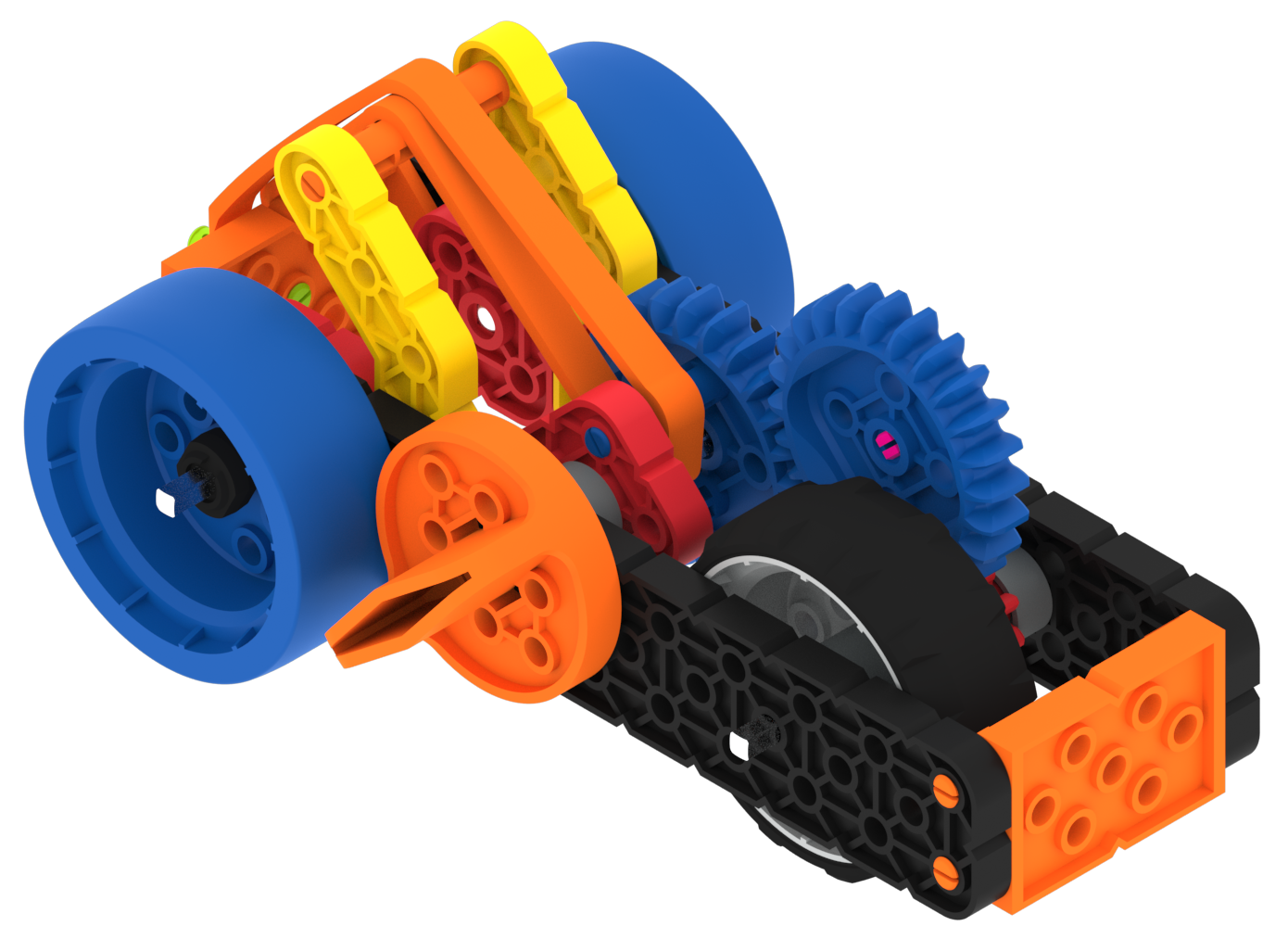Engage
Launch the Engage Section
ACTS is what the teacher will do and ASKS is how the teacher will facilitate.
| ACTS | ASKS |
|---|---|
|
|
Getting the Students Ready to Build
If we were to repeat the experiment, would you make the same prediction? Let’s test out some of our ideas with our own cars.
Facilitate the Build
-
InstructInstruct
students to join their groups, and have them complete the Robotics Roles & Routines sheet. Use the Suggested Role Responsibilities slide in the Lab Image Slideshow as a guide for students to complete this sheet.

Super Car - DistributeDistribute build instructions, Robotics Roles & Routines, and Data Collection Sheets to each team. Journalists should gather the materials on the build instructions checklist.
-
FacilitateFacilitate
building process.
- Builders and Journalists should begin building based on their roles and responsibilities, like those shown in the Image Slideshow.
- Circulate around the room to help students with building or reading instructions where needed. Ask questions about how the build is being constructed to keep all students engaged in the buildings process, and remind students to follow their Role Responsibilities if they need help taking turns.
- OfferOffer suggestions and note positive team building and problem solving strategies as teams build together.

Teacher Troubleshooting
- If students are having trouble with the pins, offer the Pin Tool as a support.
- Give rubber bands out as each group gets to that step, in order to prevent distractions earlier in the build.
- If students are having trouble with their trials, ensure that they are running their Super Car on a flat, hard surface, like a part of the classroom floor. The car may not drive as straight on a carpeted surface.
Facilitation Strategies
- Encourage students to use descriptive, spatial language when talking about how to assemble the build. Model this for students whenever possible.
- Have students use spatial relation vocabulary (across, in front of, below, behind, on top of, etc) to explain where pieces go during the build.
- Point out the “Questions” section of the Data Collection Sheet. Direct students to write out questions that they may have during the Lab.
- Offer in-the-moment observation as groups work well, and invite them to share teamwork strategies with the class.
- Use the Get Ready...Get VEX...GO! PDF Book and Teacher’s Guide - If students are new to VEX GO, read the PDF book and use the prompts in the Teacher’s Guide (Google / .pptx / .pdf) to facilitate an introduction to building and using VEX GO before beginning the Lab activities. Students can join their groups and gather their VEX GO Kits, and follow along with the building activity within the book as you read.
- Use the Teacher’s Guide to facilitate student engagement. To focus on VEX GO connections in a more concrete or tangible way, use the Share, Show, or Find prompts on each page to give students an opportunity to get to know their kits in more depth.
- To focus on the habits of mind that support building and learning with VEX GO, like persistence, patience, and teamwork, use the Think prompts on each page to engage students in conversations about mindset and strategies to support successful group work and creative thinking.
- To learn more about using the PDF book and accompanying Teacher’s Guide as a teaching tool any time you are using VEX GO in your classroom, see this VEX Library article.